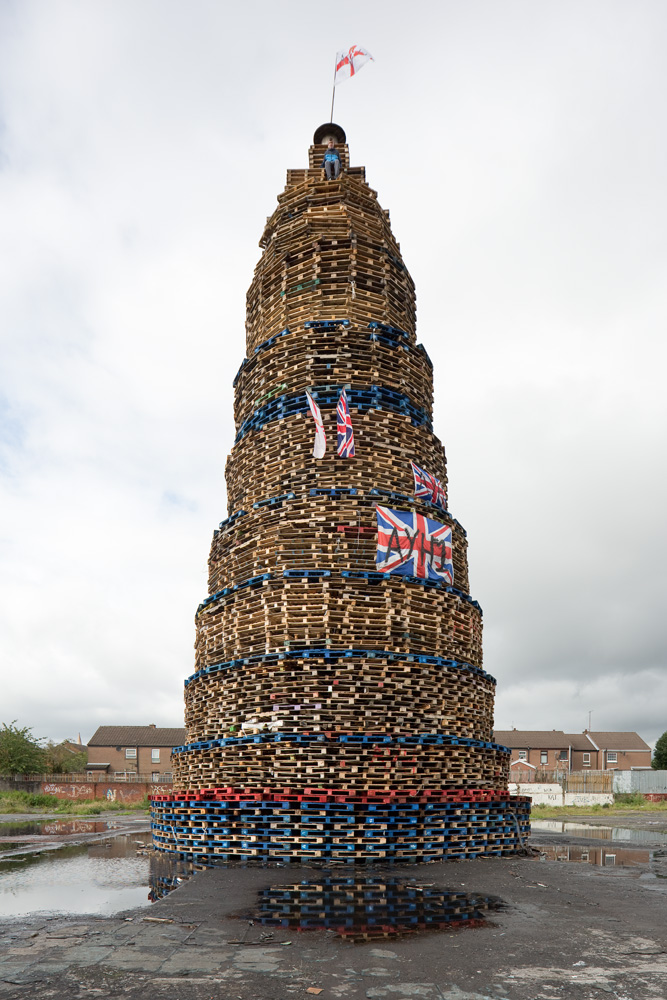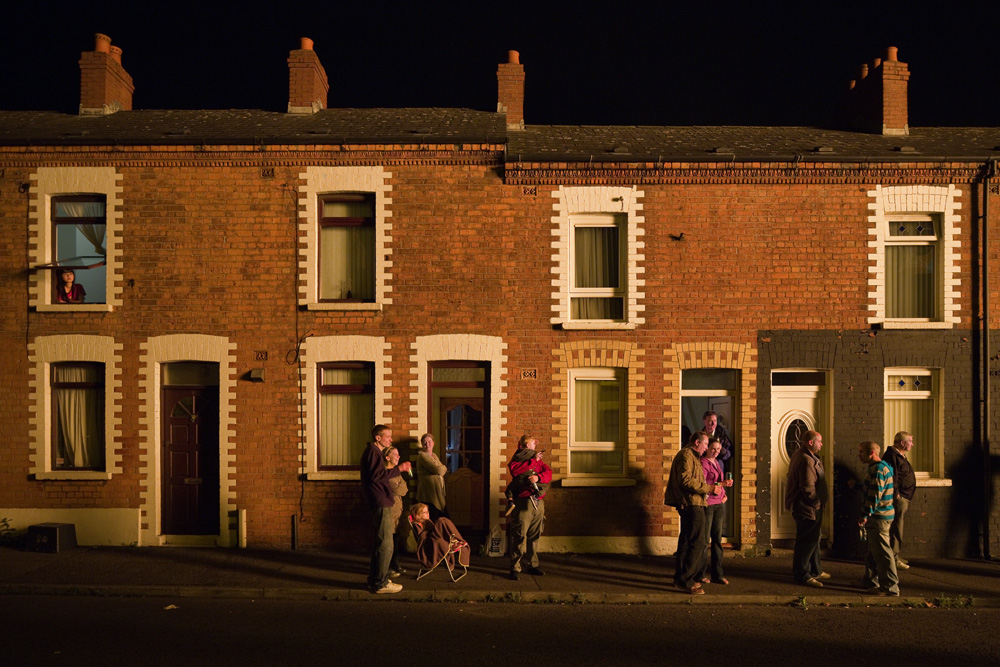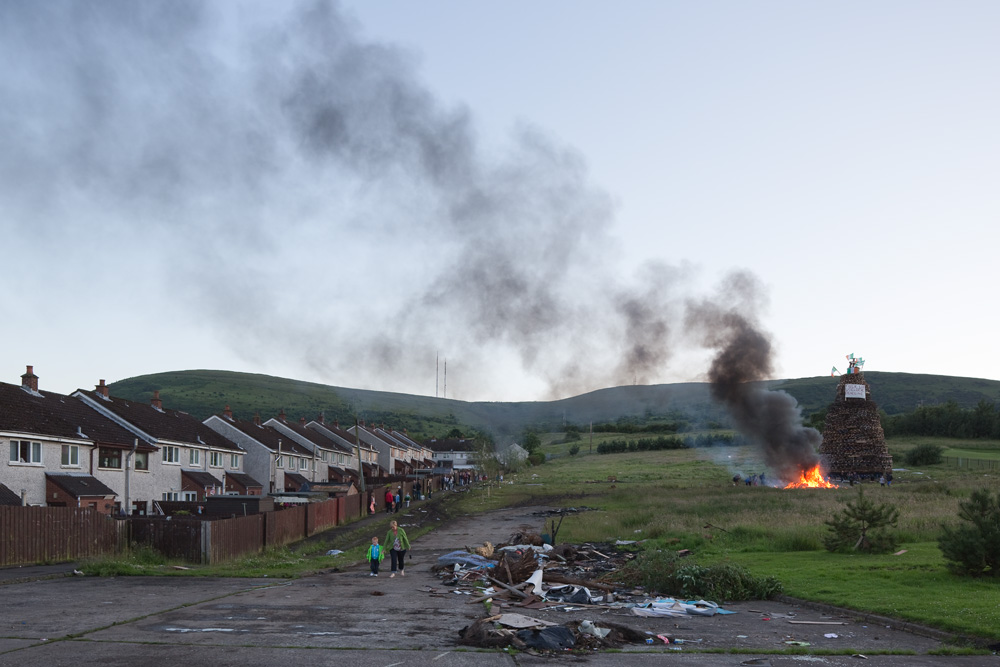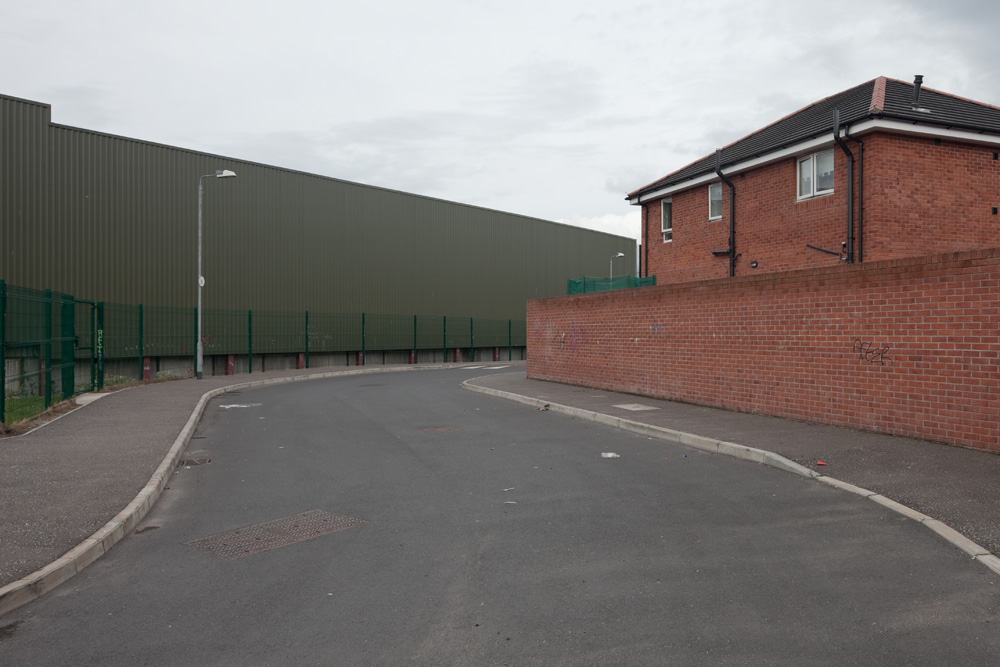David Schalliol
(American, b. 1976 Indianapolis, IN; resides in Chicago, IL)
In many neighborhoods, particularly on [Chicago’s] South Side and near West Side, these most personal places are the bellwethers of dramatic economic development dynamics. As our homes go, so go our neighborhoods. —David Schalliol
David Schalliol’s series Isolated Building Studies: Revealing Meaning Through Recontextualization (2006-present) goes beyond the category of architectural photography to engage with questions of urban change and socioeconomic inequality and to draw out the relationships between buildings and their surrounding communities. Long interested in the abandonment, vacancy, and dereliction of residential structures, Schalliol questions what these absences in the urban environment mean. He started his investigation by sitting in a vacant lot on the South Side of Chicago every day for three months, during which time he got to know the people who spent time there. The resultant ongoing project is both photographic and sociological in nature. By creating a set of uniform compositions of isolated buildings, Schalliol hopes to reveal common patterns of the impact of political and economic forces upon different neighborhoods. Schalliol states, “Instead of seeing one peculiar building, we see the legacy and immediacy of urban transformation. Instead of asking “What happened to this house?,” we ask “What is causing this phenomenon?”
David Schalliol completed his BA in Social and Political Economy from Kenyon College (1999) and his MA in Sociology from the University of Chicago (2004). Schalliol’s work has been exhibited nationally and internationally. Selected exhibitions include: Catherine Edelman’s Chicago Project, Chicago, IL (2009), Grohmann Museum, Milwaukee, WI. (2011); the Hyde Park Arts Center, Chicago, IL (2012, 2013); DePaul Art Museum, Chicago, IL (2013); Gallery TANTO TEMPO, Kobe, Japan (2014). His book, Isolated Building Studies, was published by Utakatado in 2014. He received a grant from the Graham Foundation in 2014 for his film “The Area.” Schalliol is currently perusing his Ph.D. in Sociology from the University of Chicago in addition to continuing his work as a photographer and filmmaker.

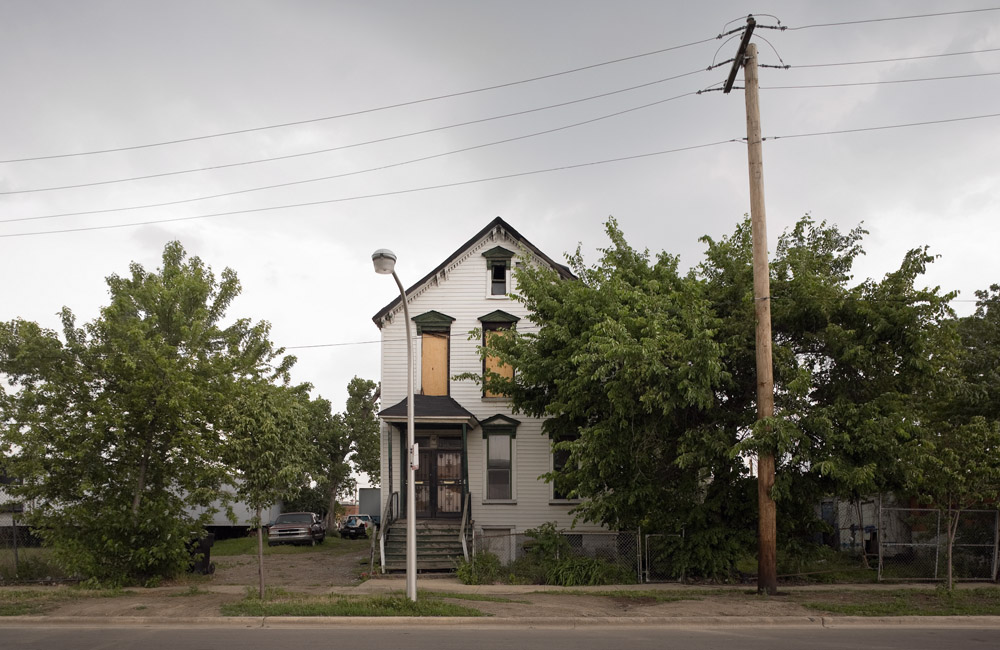
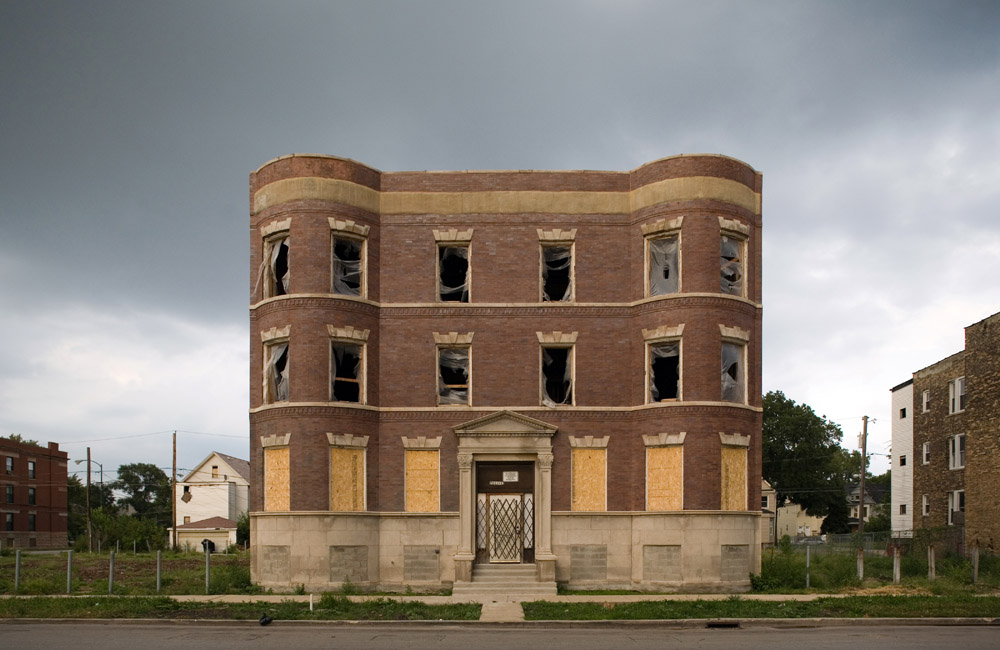

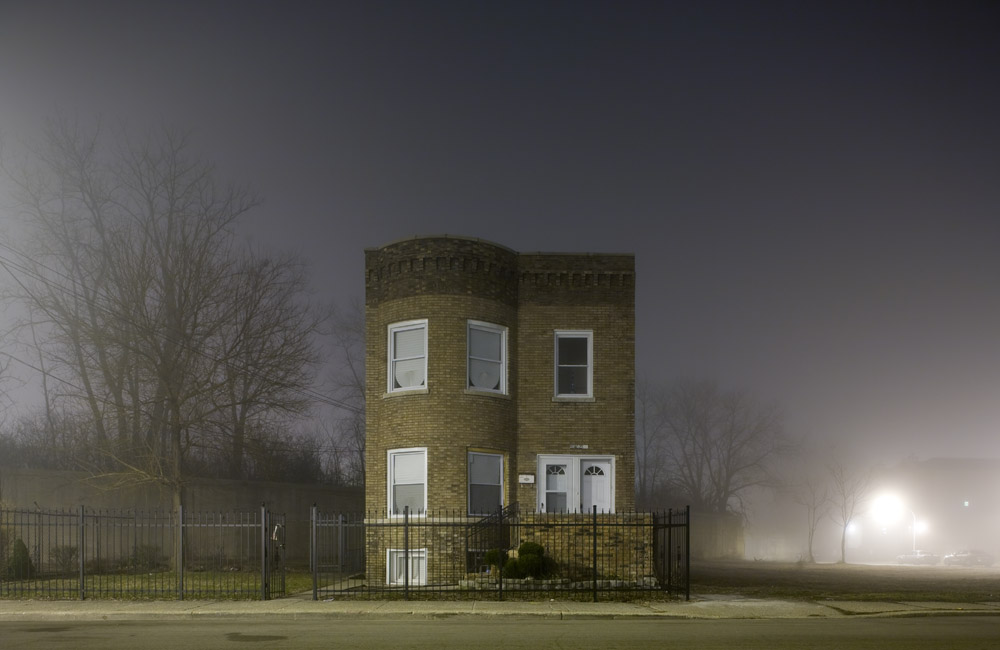
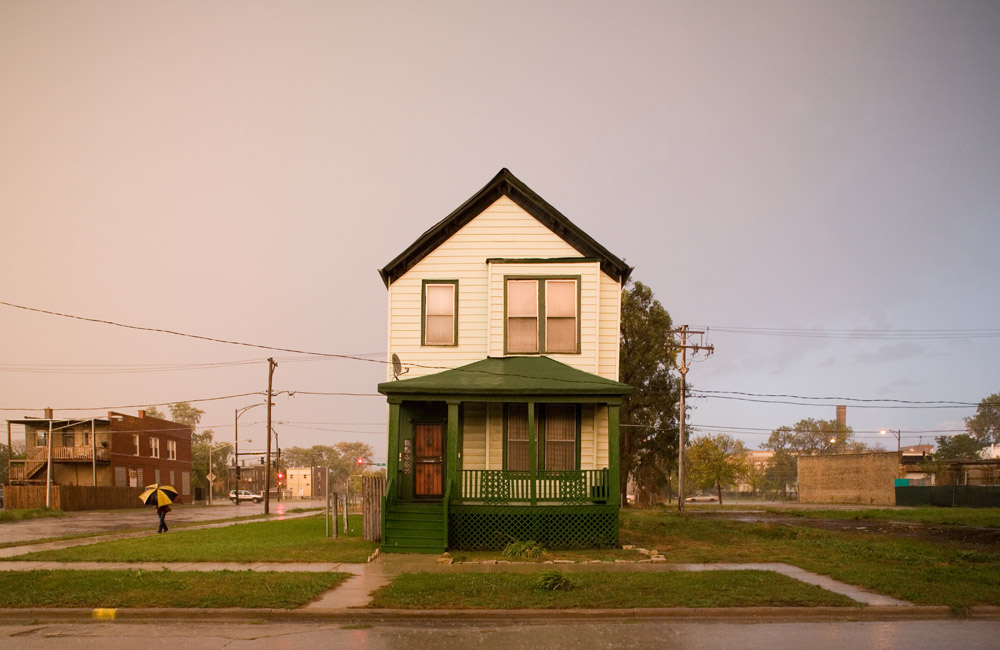
Past Portfolio
A sociologist by training, David Schalliol’s work is concerned with issues of social stratification. His photographs depict diverse locations and topics, from the infrastructure of Las Vegas to the decline of metropolitan Detroit to isolated buildings in Chicago’s neighborhoods.
In his series Belfast: Northern Ireland (2010-present), Schalliol explores tensions between Belfast’s Protestant Loyalist population and neighboring Catholic Republicans, who have long been at odds with each other. At its core the centuries old conflict is a dispute over the issue of autonomous partisan rule. After various battles and invasions throughout the 16th century, the British occupation of Ireland was solidified by the mid 1600s. The predominantly Catholic Northern Irish population was opposed to the Protestant British occupation, causing political and religious tensions to arise. This conflict has continued to create pressure in Northern Ireland, and in Belfast in particular, where Protestants and Catholics live in close proximity in a dense city. Currently, the Republican Catholics want Northern Ireland to unite with the Republic of Ireland, while the Loyalist Protestants remain devoted to the United Kingdom. Not only is the population divided along political and religious lines, but also class and cultural lines, furthering the tension.
Schalliol’s series focuses on the controversial Protestant holidays of Eleventh Night and The Twelfth, celebrated on July 11th and 12th respectively, in Belfast. The origins of the holidays date back to the Glorious Revolution in the late 1600s in which Protestants won significant battles against Catholics. On this night of the 11th of July, bonfires lit in in the dark helped the Protestants navigate through waters in and around Belfast to seize victory. The holidays have been celebrated ever since with the Protestant Loyalists building large bonfires and parading through the streets, demonstrating their traditions and past victory in a city equally inhabited by Catholic Republicans. The Loyalists see the very public celebrations as family friendly cultural events. Yet, to Republicans, the events enforce both the Loyalists political power and their support of Northern Ireland’s membership in the United Kingdom. Schalliol’s images reveal the visual manifestation of a city divided along religious and political lines and the still complex tensions of July 11th and 12th.
